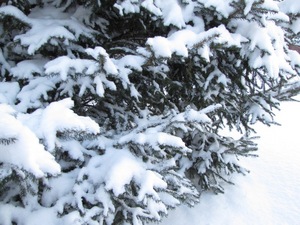The U.S. Department of Agriculture (USDA) developed a map depicting the average annual minimum temperature in zones across Canada, the United States (including Hawaii), and Mexico. Zones 1 through 7a cover Canada, where the lowest zone numbers are the furthest north or at the highest altitudes.
The map can be used as an aide in deciding what plants, including trees, flowers and shrubs, can survive through winter temperatures. Trees, flowers and shrubs are annotated by the nursery to indicate to which USDA plant hardiness zones they are best suited. Listed at the end of the article are some plants that can survive the long, cold winters in Canada.
Arctic Circle and Yukon Territory
Everything north of the Arctic Circle and most of the Yukon Territory are in USDA zone 1. In zone 1, the average annual minimum temperature is below -50 degrees F or -45.6 degrees C.
Northwest Territories and Nunavut
The Northwest Territories and Nunavut fall into USDA zone 2a, where the average annual minimum temperature range is between -50 to -45 degrees F or -42.9 to -45.5 degrees C.
British Columbia
The northern portion of British Columbia is in zones 2a (-50 to -45 degrees F or -42.8 to -45.5 degrees C) and 2b (-45 to -40 degrees F or -40.0 to -42.7 degrees C). Mountainous areas are in zones 3a (-40 to -35 degrees F or -37.3 to -39.9 degrees C) or 3b (-35 to -30 degrees F or -34.5 to -37.2 degrees C).
Along the coast is zone 7a (0 to 5 degrees F or 12.3 to 14.9 degrees C). Moving inland from the coast, the zones rapidly march upward from 6b (-5 to 0 degrees F or -17.8 to -20.5 degrees C) to 4a (-30 to -25 degrees F or -31.7 to -34.4 degrees C).
Alberta, Saskatchewan, Manitoba, Ontario and Quebec
The mountainous areas are in zones 3a (-40 to -35 degrees F or -37.3 to -39.9 degrees C) or 3b (-35 to -30 degrees F or -34.5 to -37.2 degrees C). Most of the provinces’ area is in zones 2a (-50 to -45 degrees F or -42.8 to -45.5 degrees C) and 2b (-45 to -40 degrees F or -40.0 to -42.7 degrees C). Along the U.S. border, the provinces are in zones 3a (-40 to -35 degrees F or -37.3 to -39.9 degrees C) or 3b (-35 to -30 degrees F or -34.5 to -37.2 degrees C).
Newfoundland
The western portion of Newfoundland is in zones 3a (-40 to -35 degrees F or -37.3 to -39.9 degrees C) or 3b (-35 to -30 degrees F or -34.5 to -37.2 degrees C). The eastern portion of Newfoundland is in zones 4a (-30 to -25 degrees F or -31.7 to -34.4 degrees C), and at the sea, 4b (-25 to -20 degrees F or -28.9 to -31.6 degrees C).
Nova Scotia
Northern Nova Scotia is in zone 4a (-30 to -25 degrees F or -31.7 to -34.4 degrees C). Southern Nova Scotia is in zone 4b (-25 to -20 degrees F or -28.9 to -31.6 degrees C).
Prince Edward Island and Labrador
The northern areas are in zone 5a (-20 to -15 degrees F or -26.2 to -28.8 degrees C). The southern areas are in zone 6a (-10 to -5 degrees F or -20.6 to -23.3 degrees C).
Plant Options for Each USDA Zone in Canada
Following are just a few of the plants that can survive the winters in Canada’s USDA plant zones.
ZONE 1. Though no perennial flowers can tolerate zone 1 winter temperatures, shrubs like Dwarf Birch, Lapland Rhododendron or Black Crowberry may survive through the extreme winter cold.
ZONE 2. Bunchberry (small shrub) ;American Cranberry-bush (large shrub); Paper Birch (tall tree)
ZONE 3a-b. Sugar Maple and Siberian Crabapple (trees); Van Houtte Spirea (shrub); Astilbe and Daylilies (perennials)
ZONES 4a-b through 5a-b. Japanese Maple and Flowering Dogwood (trees); Chinese Juniper and Japanese Yew (shrubs); Dianthus and Iris (perennials)
ZONES 6a-b through ZONE 7a-b. American Holly and Big Leaf Maple (trees); Azalea and Rhododendron (shrubs); Hosta and Peony (perennials)
Sources:
U.S.ForestService: PlantHardinessZones
U.S.NationalArboretum: ZoneDetail
PlantsByUSDAzones



